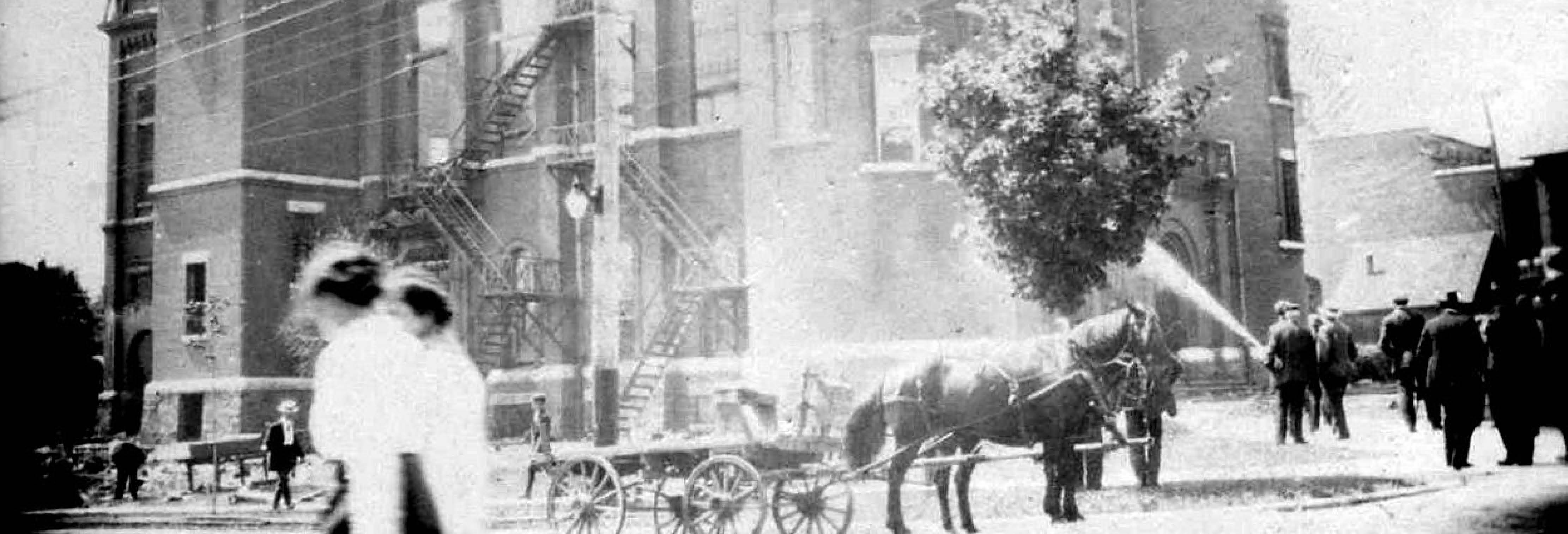
Contacts
Not long after Orillia became a village in 1867, residents began to think about moving the farmer's market from its location near the waterfront into a more central location. Some people in the Village wanted nothing more than a good large shed and a few stalls put up in the market for farmers. But the Village Councilors wanted a new town hall and a proper lock-up for the rowdies that plagued their lumber town. Arguments over the building of the hall delayed its opening, and Council finally had its first meeting in the new hall August 7, 1874. This Town Hall and lock-up served well from 1874 to 1877. Council again decided something grander was needed for both the shed and town hall, and after a few false starts, tenders were called for, based on plans prepared by the Toronto architectural firm of Gordon and Halliwell and the Opera House was completed in 1895. It cost taxpayers $25,000 and held the Council Chamber, auditorium, City Hall offices, market stalls and the lock-up.
The Opera House, described as "the finest building for corporation purposes of any town in Ontario", became an immediate source of pride for Orillia. The auditorium had 905 seats with an exquisite wrap around balcony common to the formal Opera Houses of Europe, which might have contributed to its name.
Unfortunately, fire broke out in July 6, 1915 and destroyed most of the building. The last of the debentures for the building had just been paid and Orillians did not want to pay much more for a new theatre. Council had to get the taxpayers' approval to borrow large amounts of money in those days. The Toronto firm of Burke, Horwood and White was retained to prepare plans for the reconstruction. Council and the Board of Trade pushed for a By-law authorizing a $50,000 debenture to rebuild the Opera House, but residents voted it down. It was too much to spend on a theatre in times of war. The next year's Council tried for a smaller plan, costing taxpayers $35,000, and it was approved.
The work was completed in 1917. The tall tower on the south side was not rebuilt. The Council Chamber was relocated on the west. A new lobby and stairs were added on the east between the two towers, and restrooms were added to the ground floor. The roof and design of the Opera House were changed. The wrap around "Opera House" balcony was replaced with a deeper balcony facing the stage. The dressing rooms were moved downstairs so the stage occupied the entire width of the building. A small, shallow orchestra pit and exterior backstage hoist were added.
In 1958 a new entrance was constructed on the east end of the building and many attempts to bring the front of the building back to its original beauty have yet to be realized. Renovations in the 1980's brought upgrades to the public areas with a public elevator and air conditioning. Remedial structure work was undertaken, smoke pockets were installed and a lighting bridge was added to the auditorium.
The 700 seat auditorium was also a movie house from the 20's until the late 50's. It was a favourite place on a Saturday for a kid to spend an afternoon for a quarter.
The Opera House, known for its fine acoustics and has featured such artists as the Marx Brothers, Glenn Gould, Oscar Peterson, K.D. Lang, Mickey Rooney, Dan Hill, Liona Boyd, Blue Rodeo, Jerry Dee, Ron James, Lighthouse, The Stampeders, David Clayton Thomas, Bruce Cockburn and our own hometown boy, Gordon Lightfoot and many would-be greats such as school bands and local theatre groups.
The Council Chamber was moved in 1997 to the newly renovated Tudhope building, now the Orillia City Centre. This gave the Opera House space for a small theatre, known as the "Studio" with 104 seats.
On October 18, 1997 the Orillia Opera House renamed its auditorium in honour of its most famous son. Gordon Lightfoot has performed here since he was a child and has continued the tradition of playing here, usually as a benefit, to the present day.
Since 1895 the Orillia Opera House has been bringing the best in local, national and international talent to its stages. From performances by living legends to our popular summer theatre series, there is always something happening that will entertain, educate and inspire.
The Orillia Opera House in 1910.










